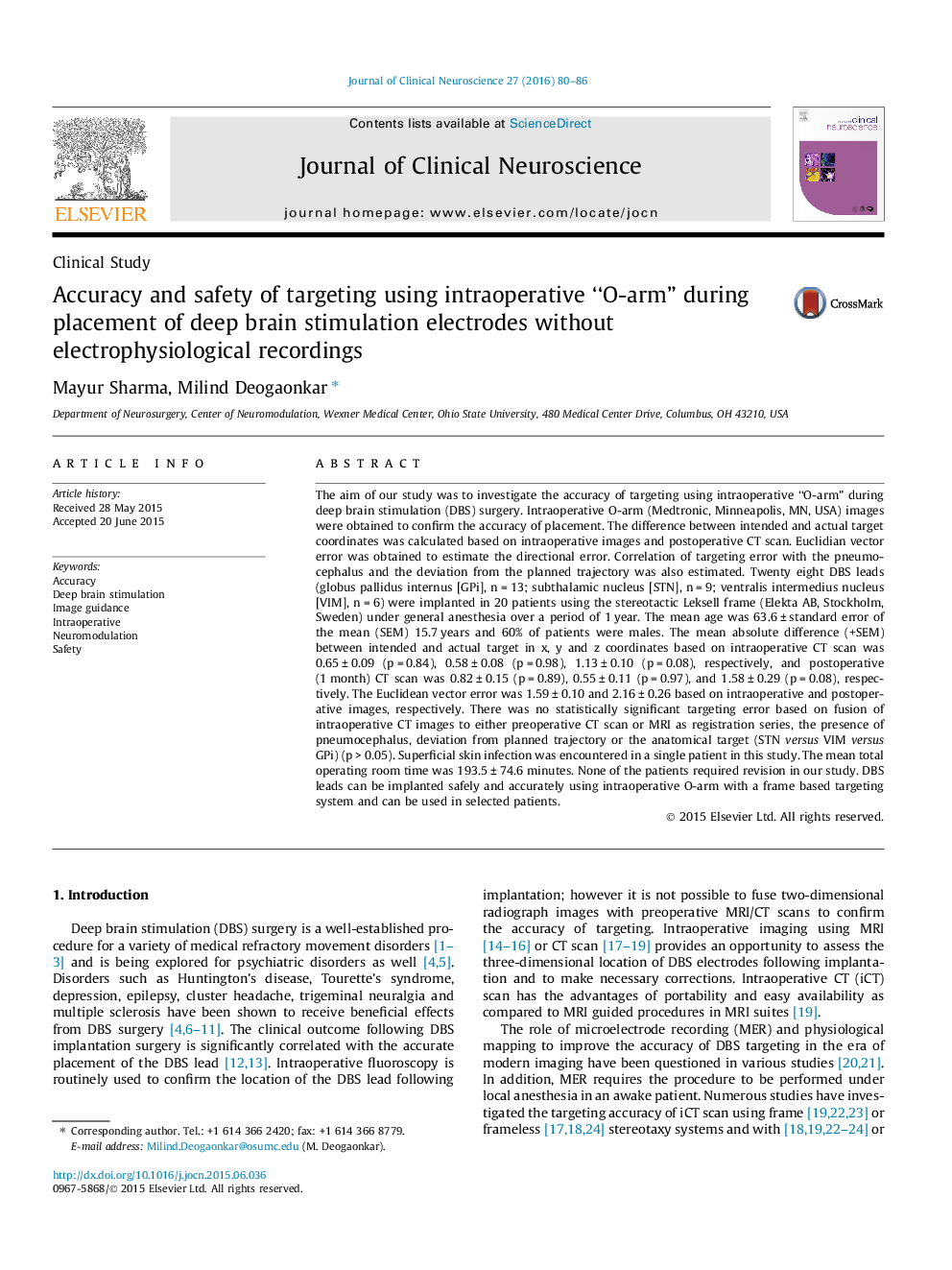| کد مقاله | کد نشریه | سال انتشار | مقاله انگلیسی | نسخه تمام متن |
|---|---|---|---|---|
| 3058241 | 1580289 | 2016 | 7 صفحه PDF | دانلود رایگان |

• Deep brain stimulation (DBS) lead can be implanted safely and with accuracy using intraoperative “O-arm”.
• Intraoperative “O-arm” provides three dimensional accuracy and can be used in selected patients.
• Frequent use of this imaging modality is required to master the nuances associated with this technology in the operating room.
• Randomized controlled studies are required to validate the efficacy of intraoperative “O arm” during DBS surgery.
The aim of our study was to investigate the accuracy of targeting using intraoperative “O-arm” during deep brain stimulation (DBS) surgery. Intraoperative O-arm (Medtronic, Minneapolis, MN, USA) images were obtained to confirm the accuracy of placement. The difference between intended and actual target coordinates was calculated based on intraoperative images and postoperative CT scan. Euclidian vector error was obtained to estimate the directional error. Correlation of targeting error with the pneumocephalus and the deviation from the planned trajectory was also estimated. Twenty eight DBS leads (globus pallidus internus [GPi], n = 13; subthalamic nucleus [STN], n = 9; ventralis intermedius nucleus [VIM], n = 6) were implanted in 20 patients using the stereotactic Leksell frame (Elekta AB, Stockholm, Sweden) under general anesthesia over a period of 1 year. The mean age was 63.6 ± standard error of the mean (SEM) 15.7 years and 60% of patients were males. The mean absolute difference (+SEM) between intended and actual target in x, y and z coordinates based on intraoperative CT scan was 0.65 ± 0.09 (p = 0.84), 0.58 ± 0.08 (p = 0.98), 1.13 ± 0.10 (p = 0.08), respectively, and postoperative (1 month) CT scan was 0.82 ± 0.15 (p = 0.89), 0.55 ± 0.11 (p = 0.97), and 1.58 ± 0.29 (p = 0.08), respectively. The Euclidean vector error was 1.59 ± 0.10 and 2.16 ± 0.26 based on intraoperative and postoperative images, respectively. There was no statistically significant targeting error based on fusion of intraoperative CT images to either preoperative CT scan or MRI as registration series, the presence of pneumocephalus, deviation from planned trajectory or the anatomical target (STN versus VIM versus GPi) (p > 0.05). Superficial skin infection was encountered in a single patient in this study. The mean total operating room time was 193.5 ± 74.6 minutes. None of the patients required revision in our study. DBS leads can be implanted safely and accurately using intraoperative O-arm with a frame based targeting system and can be used in selected patients.
Journal: Journal of Clinical Neuroscience - Volume 27, May 2016, Pages 80–86